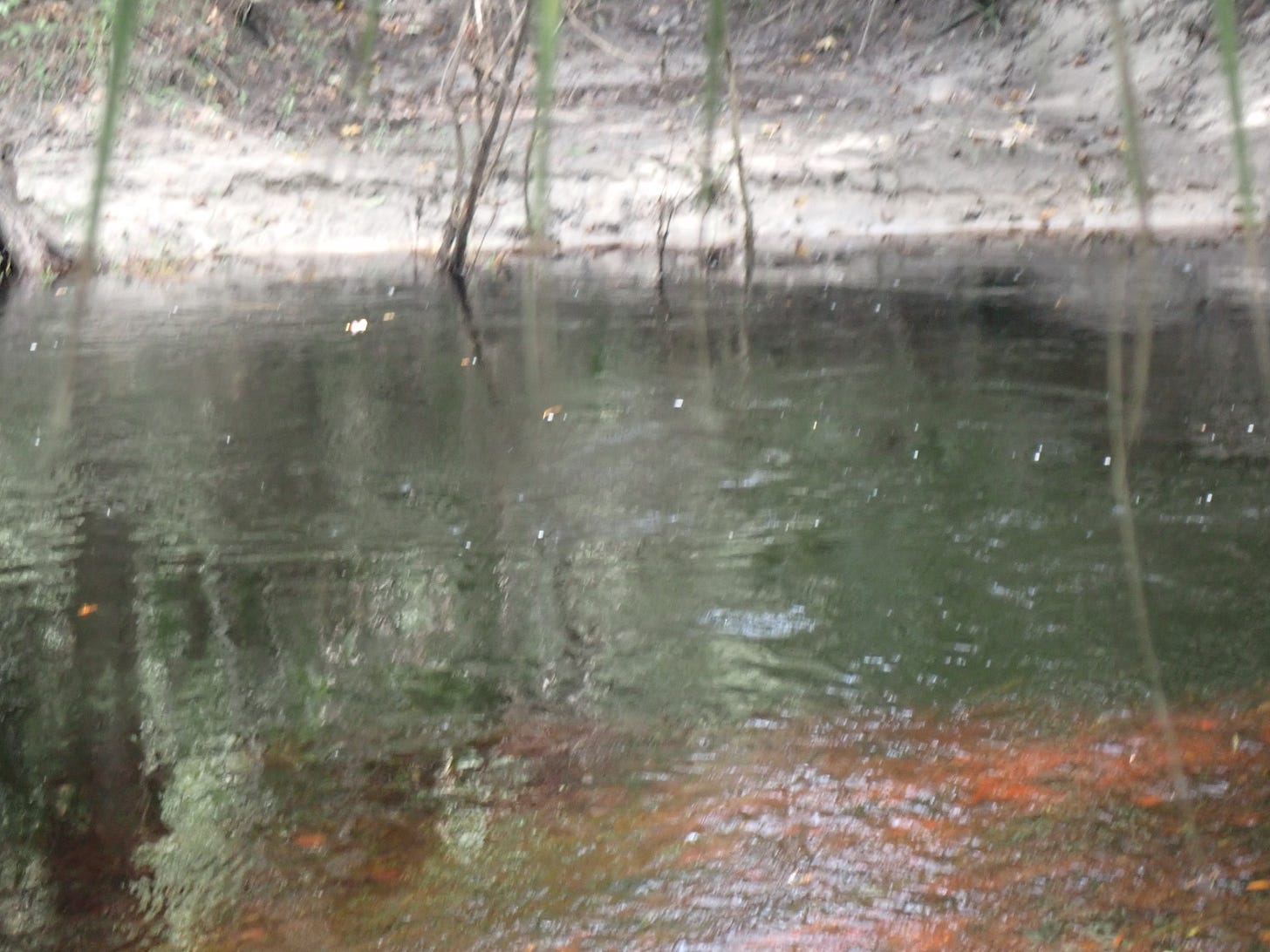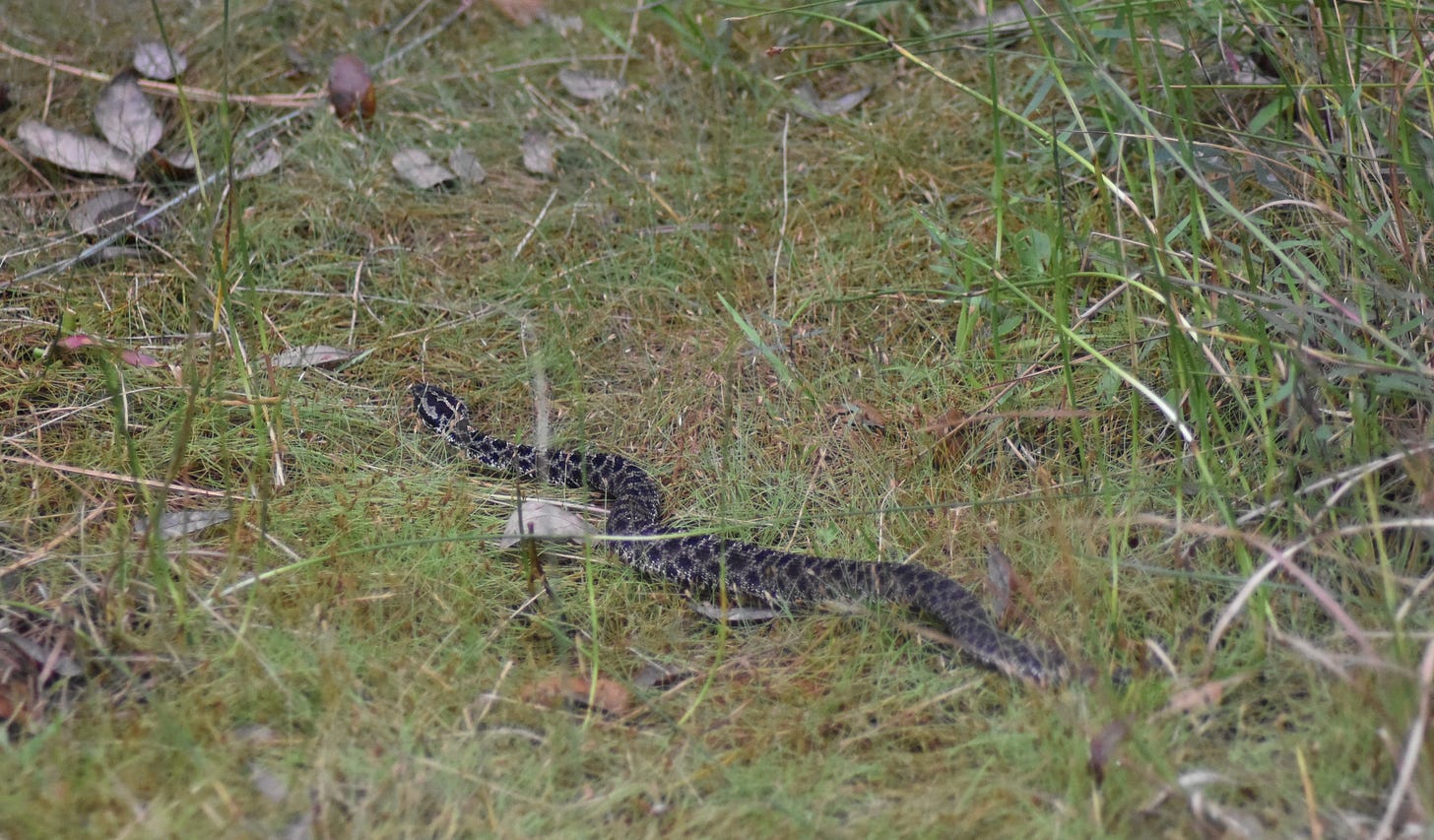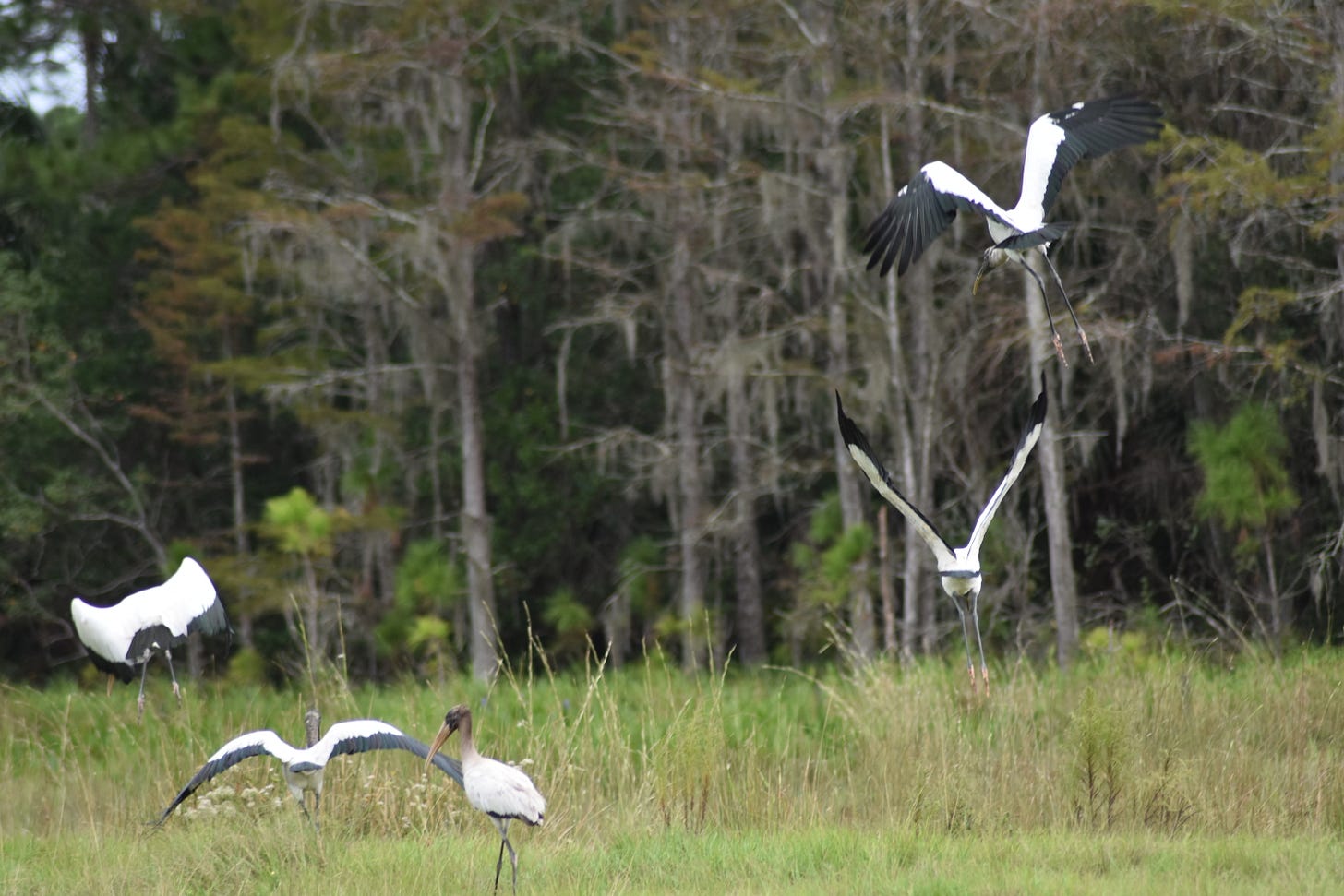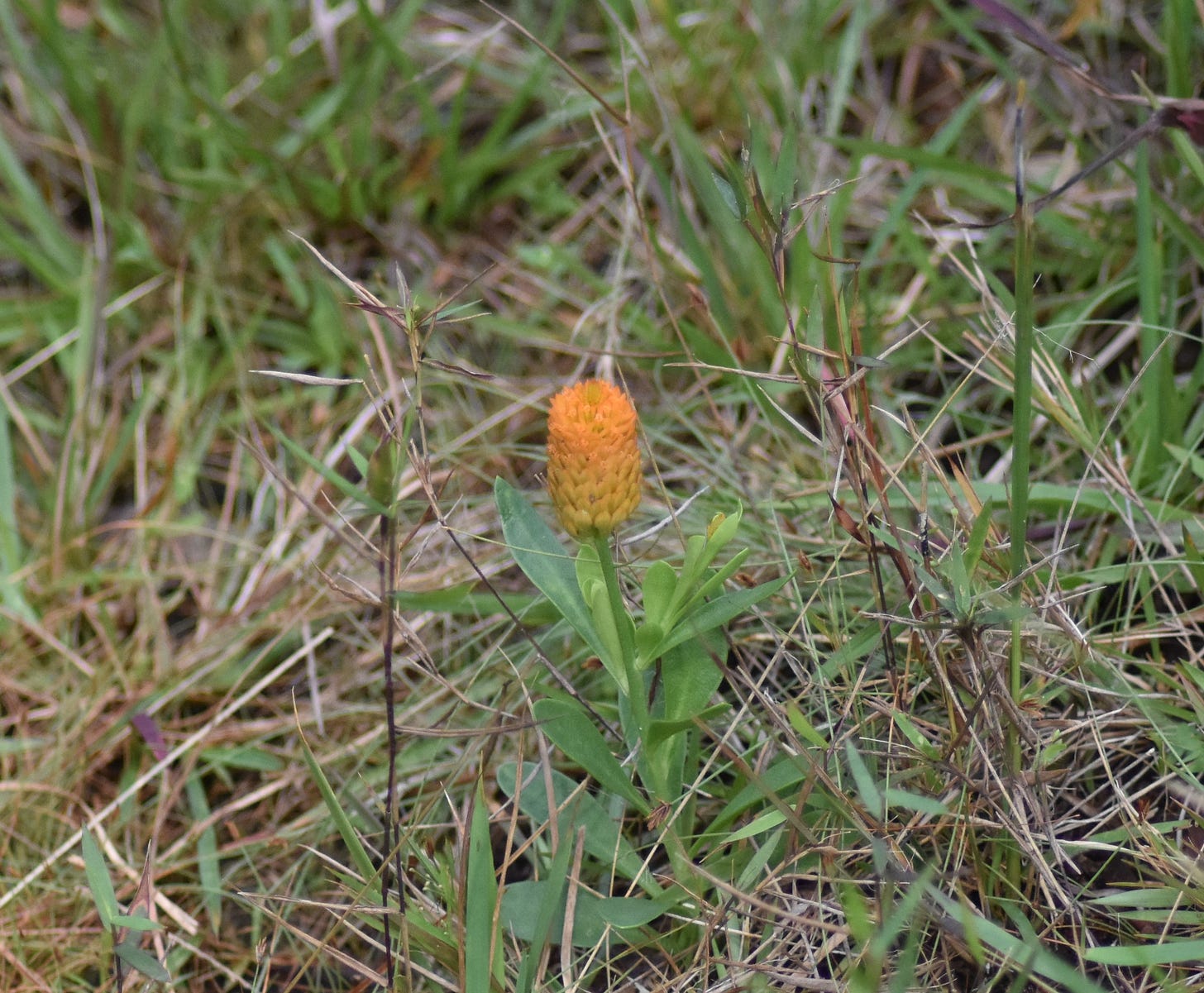Review of Palm Bluff Conservation Area Red Trail
My First 2 Rattlesnake Hike
A description of Palm Bluff according to the St John’s River Water Management District:
This 3,321-acre property contains at least eight distinct natural communities and protects more than 2 miles of Deep Creek — a large tributary of the St. Johns River that empties into the river just downstream of Lake Harney.

I parked in the parking lot just off 415 in the northwest part of the tract. I hiked the red trail (6.1 miles). I did a little of the white trail as it was necessary to get from the parking lot to the red trail. I did not go on the yellow trail.
Overall the trail was very good. A lot of it was under water, especially on the northern half. That’s both because we’ve had a pretty wet summer and because they seem to have lots of pigs. I didn’t see any pigs but they had created wallows in the road, enlarging mud puddles to take care of their herd.

The biggest obstacle was crossing of Deep Creek in the northern half of the loop. The water gauge said the depth was about 2’7”, and that felt about right. But there was little current so it was relatively easy to cross. But take a drybag, just in case if you’re going to cross there. There’s a steel bridge to use when you cross Deep Creek again in the southeastern section of the trail.
The wildlife was very nice. Just after crossing Deep Creek a dusky pygmy rattlesnake crossed the trail in front of me. He took his time crossing so I was able to get a few pictures.

There were about 10 wood storks where the powerlines crossed the trail, represented by the triple line on the map that runs roughly north-south. The marshy area under the powerlines had a lot of wading birds. There were about 10 wood storks hanging out there. Wood storks have a really ugly head but their black fringed wings are beautiful once they take off.

The plant below is a dense blazing star, also called marsh blazing star. The dense blazing star grows natively in marshy areas. It’s also called the gay prairie feather. I think the beetle is some type of longhorn beetle. I didn’t even see the beetle until I got home and looked at the pictures.

When looking for carnivorous plants like the pitcher plant you almost never look for the plant themselves. Most searchers will look for a flower that grows in the same environment as the carnivorous plant — marshy, poor soil, shade. In the south that means looking for orange milkworts. I saw several orange milkworts on this hike, but never did find any carnivorous plants.

But here was the highlight, or lowlight, of the day depending on your point of view. This Eastern Diamondback was scary. I didn't see him until he started rattling near me. He was 4-5 feet long and really fat. But the trail was about 10 ft. wide so there was lots of room to pass.
The bad thing was that when he started rattling he scared me so bad I dropped my glasses. I didn't even realize I had lost them until I had walked 100 yards or so. I went back and picked up my glasses and he coiled and started rattling again. I wasn't going back for anything else.
So overall it’s a nice hike. The trail is well marked throughout and most of the trail is a grass road. The northern half of the is very muddy and requires wading Deep Creek. But the southern half is mostly dry. And there are lots of interesting plants and animals to see. And it’s probably a good not to wear headphones on this trail. You want to hear what’s rattling at you.
If you liked this consider sharing with your friends.
In this blog I’ll be talking about nature, nature photography, natural places (especially in Central Florida) and whatever else catches my eye. If you like this please hit the share button. Or you can subscribe and be notified via email when I post. Thanks for coming by.
